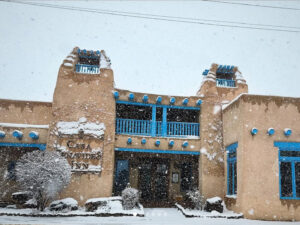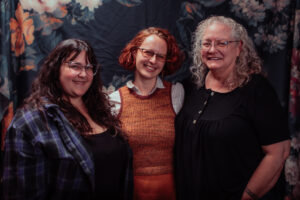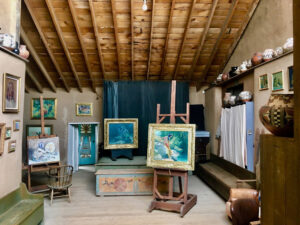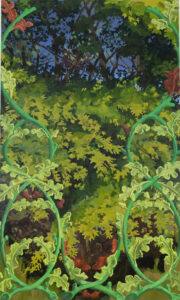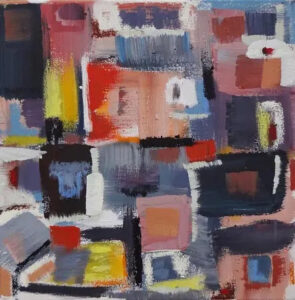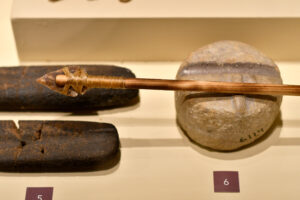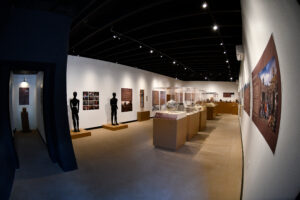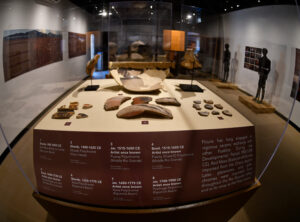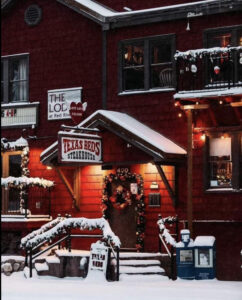Finding freedom on the mountain
by Ellen Miller-Goins
When Andrea Krejci talks about skiing, her voice carries the kind of reverence most people reserve for lifelong passions. The Swedish immigrant is animated, friendly and full of joy when talking about her chosen sport — and profession
“I think I started skiing at 2 years old,” she says. “My parents were skiers before me and my brother were born, and then they put us in a ski racing program, on a ski team — I think I was probably about 7 years old. And so that introduced me, of course, to the competitive aspect of skiing. But, I think for my brother as well, who is still also in the ski industry, it must have made such a profound effect on us both, because that was our family connection.”

That deep connection guided Krejci across continents, careers, and disciplines — from the slopes of Stockholm to New Mexico, from alpine racing to freeride coaching. Today, she is one of the few female freeride head coaches in North America, shaping the next generation of skiers through the Taos Winter Sports Team (TWST).
Krejci grew up in Sweden’s capital, but her heart was in the mountains. Skiing with her family each year became a ritual that turned into competitive racing and, ultimately, a life’s path. She came to the United States in 1993 to ski for the University of New Mexico, drawn not only by the team but by the climate.
“I specifically chose New Mexico because I needed sun. I was tired of the cold winters, and I thought, Oh, that’s great that there’s skiing in New Mexico, where there’s so much sunshine.”

She earned her MBA at UNM’s Anderson School of Management but, instead of launching into a conventional business career, decided to spend “just one season” skiing in Taos. “I tried to live in L.A. for one summer — I lasted four months,” she laughs. “It was just too big. I guess I wasn’t done with Taos.”
Discovering Freeride
When Krejci arrived fulltime at Taos Ski Valley in 1999, freeride — also called extreme skiing or big mountain — was still a fledgling sport. Unlike racing, with its regimented gates and timed runs, freeriding is all about creativity and flow. Freeride challenges athletes to carve their own line down steep, ungroomed terrain. Style, fluidity, technique and control matter just as much as speed. Natural features — cliffs, chutes, and rock bands — become opportunities for airs and tricks. Krejci’s introduction came through a friend, Erica Cobb, who invited her to a competition in California.
“I had never heard of an Extreme Skiing Competition, so when Erica described to me what this ski competition was all about, I was like,,wow — it’s just skiing down a mountain and finding fun things to do along the way? Awesome! I can do that! I felt like this is what I had been searching for my whole life. Growing up, I loved competing in ski racing, but I was never the fastest. What I missed was the free-skiing aspect,” she says.

She remembers chasing adventure even as a young skier. “We used to go to the Alps every year with my family for ski vacations. I remember building kickers at La Plagne, France with the boys and hitting those, and hiking up a peak in Val d’Isere for “off-piste” skiing. Growing up, of course, there was no such thing as extreme skiing competition. Her first competition in Kirkwood, California, sealed it. “What freeride is all about is the community of riders. The camaraderie that comes with it, which I didn’t find in ski racing. Ski racing is more like the individual versus everybody else. In Freeride you’re all cheering for each other. You support each other to the max.”
Krejci began coaching alpine racing soon after moving to Taos, but a spur-of-the-moment trip with one of TWST’s ski racers to a junior freeride event in Snowbird, Utah, planted the seed for something bigger. Supported by then program director Sean Cassily, and inspired by the enthusiasm of her athletes — and the mountain itself — she launched TWST’s freeride program in 2011.
“We had kids join right away, and we started with maybe 14 kids,” she recalls. “Those early days, I will never forget, because we were going so hard and I was still competing myself so it was a great motivation. We had kids that would show up at 8:45 and we wouldn’t stop skiing until 4:05 because the lift had closed. We just couldn’t get enough.”

The program grew quickly, eventually reaching about 45 athletes and a team of six or seven coaches. It also produced standout skiers such as Emma Patterson, who has gone on to compete in the Freeride World Tour.
Though freeride looks like fearless improvisation, Krejci emphasizes structure and progression. Early in the season, athletes focus on technical drills and learning jumps and other maneuvers in the relative safety of the terrain park or small natural features. As chutes and other terrain opens, the focus shifts to creativity and line choice. “We’re not going to have a kid ski or jump off something that they’re not ready for, so we always start small. It’s all about progression,” she explains.
At Taos, that progression can start early. “Now we (TWST) hike 7-year-olds up the ridge,” Krejci says, describing the way even the youngest athletes are introduced to Taos Ski Valley’s iconic extreme-skiing terrain. “They start incredibly young, and that foundation builds a confidence that carries them through the rest of their skiing.” At TWST, an athlete can join the Freeride team once they turn 10. Before that, the athlete will go through the Devo and/ or Gateway programs, and then make their choice of where they want to put their focus. Ski Racing, competitive Snowboard or Freeride.
Safety and avalanche awareness are woven into training. “We do work with the Taos Ski Patrol and the Taos Avalanche Center, and they come and do avalanche presentations for us — both in a classroom setting — and then we go out and practice on the mountain. All of that is part of our curriculum.”

But beyond podiums and championships, Krejci measures success in personal growth. “When I see an athlete overcome a fear that they might have — like, ‘Oh no, I can’t jump’ — and then they start jumping, even if it’s just a little bump and they leave the ground, that could be a huge success for somebody. So it’s very individual. And that, I think, is what keeps us going as coaches. We see success every day.”
Beyond the Slopes
Like many who carve out a life in mountain towns, Krejci has worn many hats: raft guide, real estate broker, coach. She believes the variety has shaped her resilience. “It makes you be prepared for anything,” she says. “Like within rafting, you never know when you’re gonna bump into a rock and somebody’s gonna fall out or a wave is gonna knock you over. Coaching, too. You never know what’s gonna happen out there. Real estate, you never know what’s gonna get thrown your way.”

These days she splits her time between Taos, coaching and selling real estate, and Santa Fe where she’s dabbling in real estate as well, and where her life partner Brian Freshman operates Freshie’s Juices on the Santa Fe plaza.
Krejci is keenly aware of her role as a trailblazer in what has long been a male-dominated sport. Her advice for young women? “Don’t let it stop you if there’s only boys, or if you’re only one of a few girls. Latch on to the boys. That’s what I did. You can do anything they can, and they’ll be in awe!”
She also points to initiatives like Rippin’ Ladies, a grassroots program building community among freeride girls and women across the country. “What’s happening now within the freeride community and especially the girls is spectacular,” she says. “The young girls right now are just as good as the boys. It’s amazing! They’re pushing each other.”

Looking back on her decades in Taos, Krejci is grateful for the journey. “Just go after what you like to do,” she says simply. That philosophy carried her from a 7-year-old racer in Sweden to one of the leading freeride coaches in North America — and helped shape a thriving community of athletes who share her passion for the mountains.
For Krejci, life is less about standing still than carving a fresh line through whatever terrain lies ahead. “Taos is such a good mountain. The mountain just lends itself to freeride.”
TWST Freeride at a Glance
- Founded: 2011, by Andrea Krejci
- Athletes: 45 skiers, ages 10 to 18
- Coaches: 6–7 dedicated staff members
- Season: Weekends from late November through early April, plus holiday camps
- Focus: Technical drills, freeride progression, avalanche awareness, and competition prep
- Notable Alumni: Emma Patterson, Freeride World Tour competitor, professional skier for Salomon.


